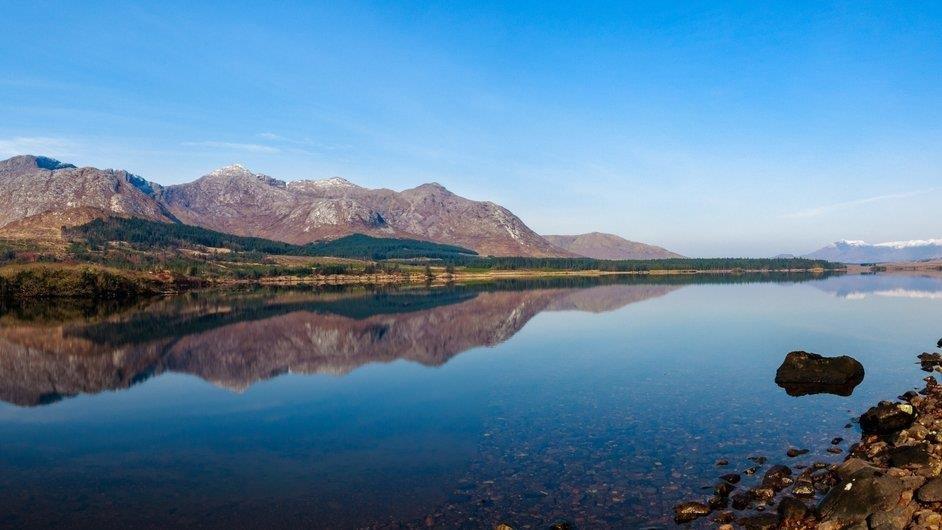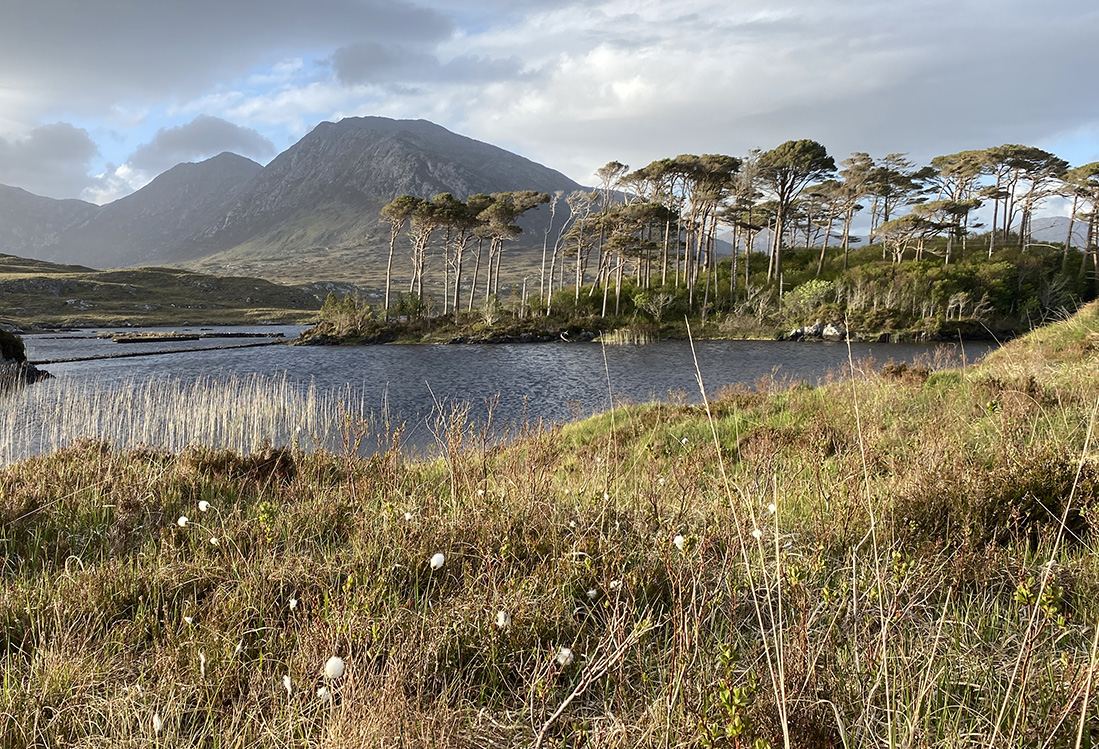Restoring Western Peatlands
Coillte's new strategic vision for forestry will see the redesign of 30,000 hectares of peatland forests by 2050 through a programme of rewetting or rewilding. Peatlands are valuable natural habitats and are also an important carbon sink, with drained or damaged peatlands emitting significant amounts of greenhouse gasses globally. Our Wild Western Peatlands project is actively working to find solutions that will benefit climate, biodiversity, water quality and local communities.
‘We are looking forward to collaborating with Coillte Nature on the educational and community development aspects of the project’ said Sinead Grimes of Forum Connemara, who joined one of our group visits to our Wild Western Peatlands pilot site at Derryclare in Connemara this summer. ‘It is vital to emphasise the importance of these projects at a local level to ensure people have their say and appreciate the high nature value of these wonderful amenities on our doorstep. We need to ensure they are safeguarded for the next generation.’
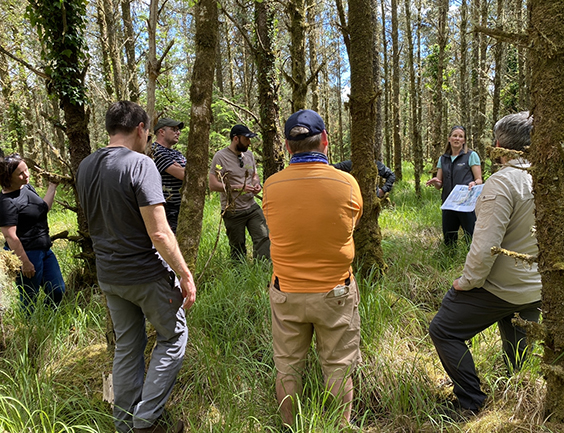
Forum Connemara are one of a range of interested groups which we have met with at this beautiful location over recent months to discuss the future of this site and the wider Wild Western Peatlands project. Other stakeholders include the National Parks and Wildlife Service (NPWS), Inland Fisheries Ireland, Marine Institute, Environmental NGOs, local businesses, the Local Authorities Water Programme (LAWPRO) and the Forest Service.
Following surveying and initial discussions with these and other stakeholders last year, a management plan was drawn up for this 560 hectare site (nearly 1,400 acres) with the aim of maximising the positive benefits for biodiversity, water and climate. Currently about 75% of the site is under commercial forestry, with 18% having been cleared of forestry, and in some places the blanket bog and wet heath is beginning to naturally regenerate. The remainder of the site was never planted with forestry and is a mix of blanket bog, heath, native woodland and mixed woodland.
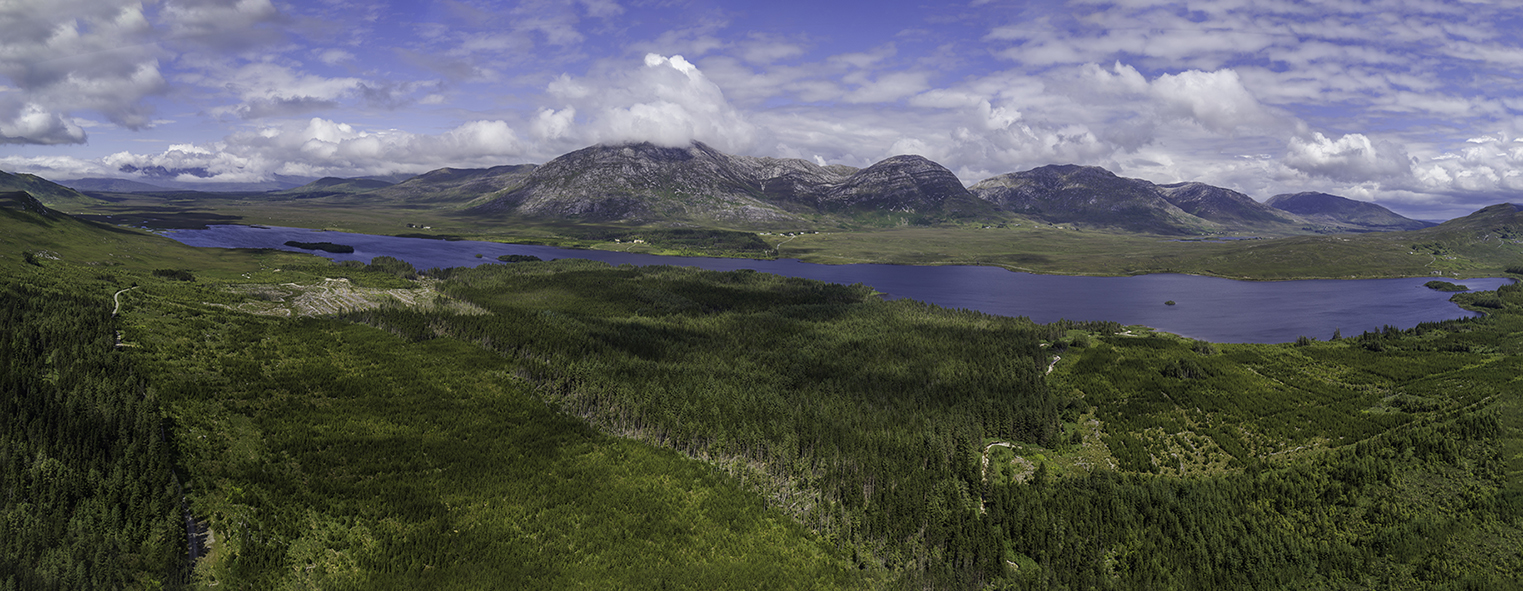
We aim to increase the blanket bog and wet heath habitats to 60% of the site, with 37% under a mixed forest cover and the remaining 3% open land alongside streams and the lakeshore. Before this site was first planted with commercial forestry in the 1960s, it would have been primarily blanket bog and wet heath, and our ambition is to restore these habitats where possible.
Part of the site borders the Derryclare Nature Reserve, and in these areas, where the soils are suitable, we will aim to establish pioneer native woodland, allowing the ancient native woodland in the Nature Reserve to expand somewhat. In other parts of the site, existing conifer forest will be managed in a way that creates the environment for a more diverse woodland to develop into the future in terms of tree age and species.
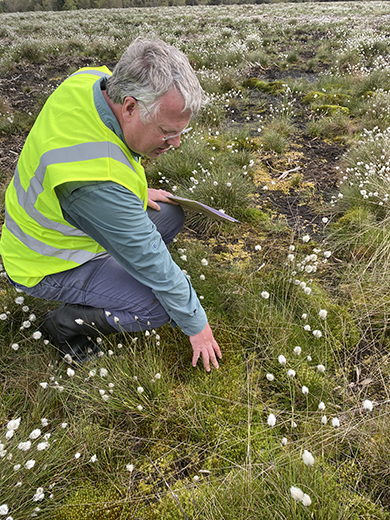
However, our first port of call will be to remove areas of pine and spruce which have reached maturity but are not suitable for commercial harvesting. The primary aim for these areas will be to restore the blanket bog and wet heath habitats. In the early summer we visited multiple ‘forest to bog’ restoration sites in Scotland and were impressed to see the results that are being achieved in large-scale projects, with some novel techniques being used. We would like to extend a big thanks to Ian McKee and Tim Cockerill from Forest and Land Scotland for hosting a very informative visit. We look forward to applying some of the learnings from these Scottish sites, and from other Irish peatland restoration sites at Derryclare and in future, at other Wild Western Peatland project sites.
To learn more about the Wild Western Peatlands project see our dedicated web page and earlier blogs.
